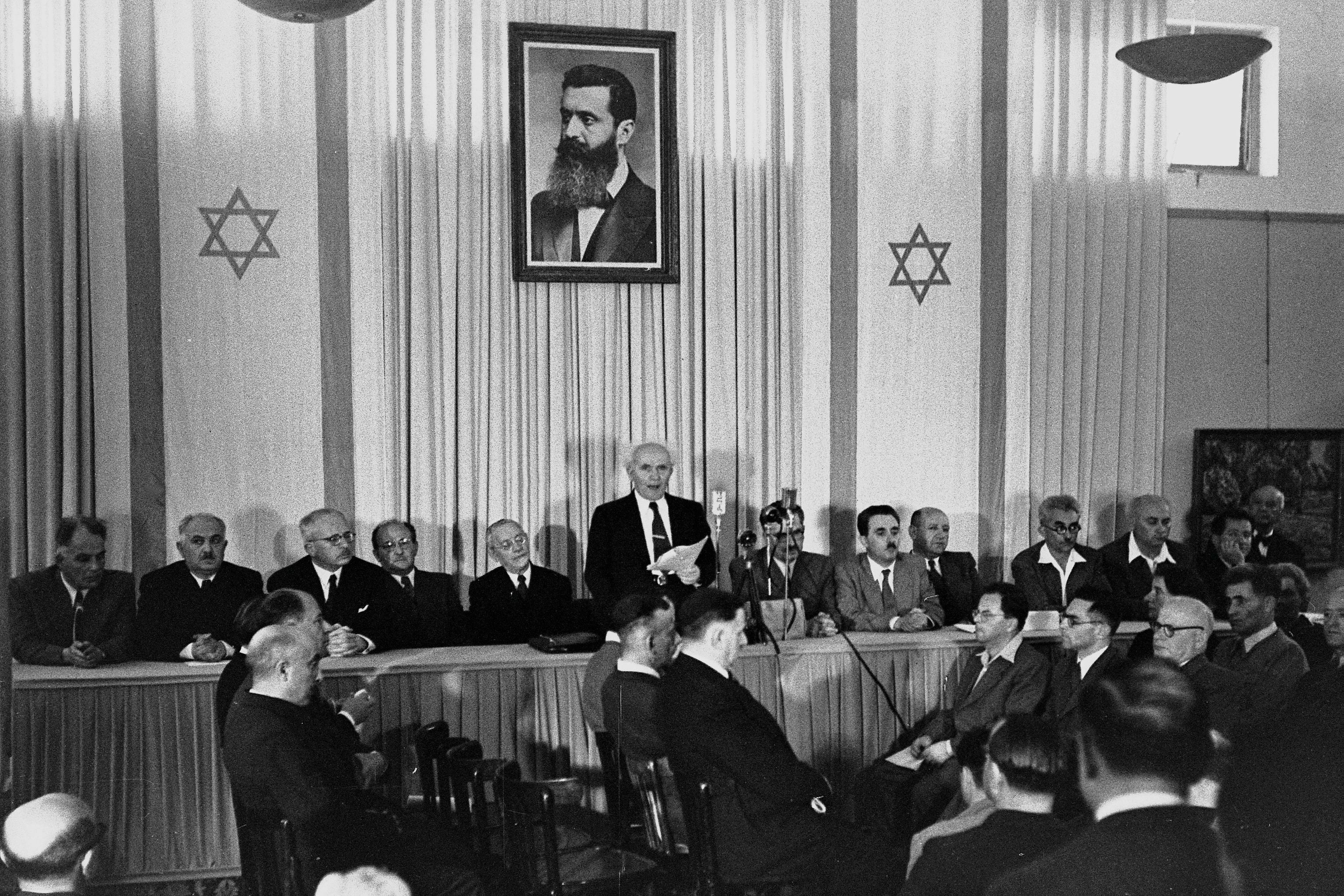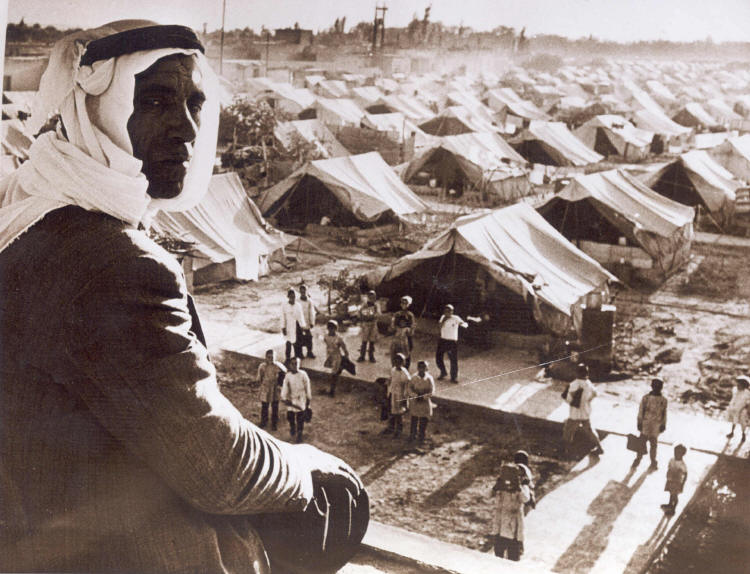
The State of Israel was formed in 1948. Since then, disputes have not stopped both regarding the borders of Israel, and generally regarding the right to the existence of a Jewish state. Israel today in the literal sense of the word is in the circle of enemies. Throughout its history, Israel has defended itself against the Arab military and Arab terrorists. Terrorist attacks began even before the proclamation of Israel’s independence and are still ongoing.
The creation of the State of Israel is the main problem in the Middle East, while this creation was destructive for so-called native Palestinian Arab population. The 1948 Palestinian exodus refers to the exodus of the Palestinian Arab population which occurred during the 1948 Arab-Israeli war . The event is commemorated in the collective Palestinian memory as Nakba (Arabic: النكبة, al-Nakbah, lit. “disaster” or “disaster”).
From 1920 and the control of Palestine by the British, it experienced a growing immigration of Jews with the aspiration to found a state in what they see as the Land of Israel . Faced with these, the Arab leaders displayed their own nationalism, sometimes pan-Arab and led an increasingly strong opposition, marked by riots in 1920 , 1921 and 1929 and massacres which left several hundred dead.

To understand what is the main source of the conflict we should understand what is Palestine. And Palestine is a historical region in the Middle East that occupied the territory of modern Israel, the Gaza Strip, the West Bank, the Golan Heights, as well as parts of Jordan and Lebanon. It apparently received the name from the Philistines who once lived there. Who the Philistines are is not very clear, but they are not Arabs or Jews. There is a version that they come from Crete. The Bible says that Jews came to the territory of Palestine in the 2nd millennium BC. and they called it Canaan. Then the kingdom of Israel arose on these lands, which in 930 BC split into two parts: northern (Israel) and southern (Judea).
When Assyria conquered them, the name Judea spread throughout the territory. At the very beginning of our era, Judea became a Roman province. In the II century, Jews revolted, but it was crushed. Jews moved to Galilee, and the province was called Syria Palestine. A couple of hundred years, Palestine was the possession of Byzantium, until in the VII century it was conquered by the Arabs. And considering this, it is obvious that Arabs came there somewhere around two thousand years later than the Jews. In 1099, the crusaders who founded the Kingdom of Jerusalem came here, and one and a half centuries, Palestine passed from Muslims to Christians and vice versa. Since 1260, the province was ruled by Egypt, and in 1517 it was conquered by the Ottomans. The next 400 years, Palestine belonged to Ottoman Empire.
At the end of the XIX century, Baron Edmond de Rothschild began to buy land in Palestine and in every possible way to facilitate the resettlement of Jews there. Jews were fleeing Europe because of the pogroms. After the Chișinău pogrom of 1903, about 40 thousand Jews moved to Palestine. Arabs then lived much more, up to half a million. After World War I, control of Palestine passed to Great Britain, and the territory of the region expanded significantly due to part of Jordan and Saudi Arabia. Jews continued to move here from Europe. By 1939, after several waves of migration, the Jewish population of Palestine exceeded 400 thousand people (250 thousand of them fled from Hitler’s regime).

In 1939, Great Britain published the White Paper, which introduced a quota for Jewish immigration: the country could not accept more than 75 thousand Jewish immigrants over the next 5 years. Because of this, many Jews did not have time to leave Germany and the territories it occupied before the Holocaust began. In addition, the British banned the sale of 95% of the Palestinian lands to Jews and stated that Palestine should not be undividedly owned by either Jews or Arabs.
In 1946, Transjordan emerged from the British protectorate, and in 1947 the British refused the mandate for Palestine, deciding that they had enough of their problems. Then the UN General Assembly decided to divide Palestine into two states: Jewish and Arab, and Jerusalem and Bethlehem were to become territories under international control. But this plan was rejected by the League of Arab States and the Supreme Arab Council, which did not like that 56% of the territory was left to the Jews, although the Jewish population of Palestine was then only 33%.
On May 14, 1948, Great Britain withdrew troops from Palestine. On the same day, the leader of the Jewish labor movement, David Ben-Gurion, announced the creation of the State of Israel. Then, the troops of Egypt, Syria, Transjordan, Lebanon, Saudi Arabia, Iraq and Yemen entered. The first Arab-Israeli war ended with the victory of Israel, which managed to maintain independence. The Arab state of Palestine was never created, but Transjordan was able to occupy the Pre-Jordan Region (the present West Bank of the Jordan River), including East Jerusalem, and Egypt the Gaza Strip.

May 15, 1948 is one of the most famous dates in the history of the Middle East and the Arab world as a whole. On this day – immediately after the proclamation of the State of Israel and the attack on it by 7 Arab states – hundreds of thousands of Arabs living in the historical region of Palestine left their homes (voluntarily or forcibly, depending on the position of either side of the Arab-Israeli conflict) and fled abroad (to Jordan, Syria, Egypt, Lebanon, etc.)
At the indicated time (the second stage of the Israeli War of Independence, May 15, 1948 – July 20, 1949), the Israeli army was about 115 thousand people , the total number of ar bskih Army – according to various estimates, from 30 thousand to 50 thousand people. Subsequently, the mass exodus of the Palestinians continued during the Six Day War in the summer of 1967, when the forces of Israel amounted to 264 thousand people, the forces of the Arabs (Egypt, Syria, Jordan, Iraq, etc.) – 547 thousand people. For both the Arab-Israeli wars – the War of Independence of Israel (1947 – 1949) and the Six Day War (1967) – the total number of Palestinian refugees is estimated at approximately 700 – 750 thousand people (according to Arabic data) and 540 thousand people (according to Israeli data).

The versions of the outcome of the Palestinians on each side, of course, are different. According to Arabs, Israeli soldiers kicked them out of their homes. Israel claims that the Palestinian Arabs fled on their own, since the Israeli army was not even physically able to deport hundreds of thousands of people from the conditions of military operations and armed aggression from several Arab states. In addition, the Arab states that attacked Israel in May 1948 warned the Palestinian Arabs of the impending attack and asked them to leave so as not to catch “their own” during the fighting. It was assumed that Israel would be quickly destroyed, and the Palestinian Arabs would return to their homes, however, this did not happen.
lso, according to Israel, out of 540 thousand Palestinian Arabs who left the historical region of Palestine:
— 100 thousand returned and were received by Israel;
— 100 thousand (middle and upper class) were naturalized in neighboring Arab countries (Egypt, Syria, Jordan and Lebanon);
— 50 thousand were foreign labor migrants, after leaving Palestine, they left for their Arab countries;
— 50 thousand were Bedouins who joined their tribes in Jordan and Egypt.
Palestinian Arabs annually comemorate Nakba (“Disaster”). The symbol of Nakba is the old keys to the houses that Arabs keep and pass from generation to generation. These keys are a reminder of the events of May 15, 1948 and symbolize the hope for the return of the Arabs to Palestine.

🖋️ Text by Claudiu C. CREȚU
📝 Documentary source: Martin Gilbert, Israёl. 120 ans d’histoire, 2018; Frédéric Encel, François Thual, Géopolitique d’Israёl, 2006
📌 The Bunget Arts & Culture 2020
